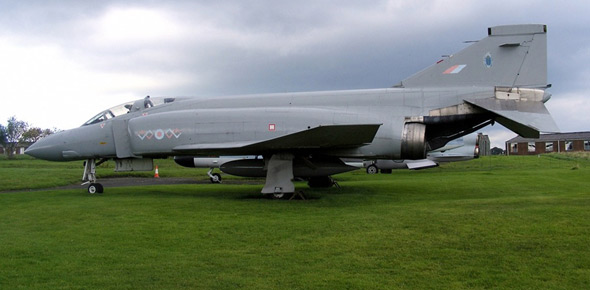Repair of ground heater equipment should never be attempted
The amount of heat required to raise the temp of one pound of a...
During an operational check of the MJ-1B bomblift, all hydraulic...
When servicing the hydraulic cart, what prevents large particles in...
When filling and bleeding the MJ-2A-1 hydraulic test stand, the system...
When starting the MA-3D air conditioner, hold the safety override...
Where can you find test procedures for a particular component?
When troubleshooting the electrical system on the MJ-1B bomblift, what...
At what storage cylinder pressure, in psig, should the SGNSC nitrogen...
What is used to raise the mast on the FL-1D?
Heat added to a gaseous substance is known as
You check the backup hydraulic system on the MHU-83C/E bomblift by
What must you do prior to raising or lowering the mast from the...
What valve on the MJ-1B bomblift prevents collapsing of the cantilever...
What type of refrigeration system leak occurs when the pressure within...
The HCU on the New Generation heater starts the main air fan for...
When should you use a starting aids to start the New Generation...
When performing refrigerant recovery, be sure
How is the air compressor in the SCNSC categorized?
What type of solution is used in the MA-3D aftercooler system to carry...
What medium is used to cool the MC-2A rotary vane compressor?
If there is discrepancy between the workcards and TO, you should...
Oil in the rotary vane compressor
What type of mechanism does the B-4 adjustable aircraft maintenance...
What component on the SGNSC removes nitrogen from the ambient air?
The factors that have the greatest bearing on the temperature of a...
Oil-moisture traps are required on a multi-stage reciprocating...
What component on the MA-3D air conditioner allows the operator to...
When a unit comes in with a write-up, how do you verify a malfunction...
What component on the MA-3D air conditioner receives input from...
What is important to keep in mind when performing maintenance on the...
What component provides manual speed adjustment on the AF/M32T-1 cabin...
Heat that can be felt and added or subtracted to a substance without...
The relationship between pressure and the boiling point of a liquid is...
What prevents overpressurization of the steering system of the MJ-1B...
During an operational check of a SGNSC you find that the engine...
When verifying the proper operation of the centering mechanism on the...
What switch, when turned tot he OFF position will prevent all control...
What component on the New Generation Heater activates the HCU?
What engine system safety device on the MJ-2A-1 hydraulic test stand...
What component on the B-1 adjustable aircraft maintenance platform...
What section of the towbar has a screw actuated fork assembly that is...
When LOX carts are being transported, what position should the vent...
How can a restriction in a refrigerant system be identified?
When a line is to be disconnected you
What are the two lifting capabilities of the davit (lift pulley) on...
To start the SGNSC, the operator must place the ignition switch in the...
After the refrigerant leaves the compressor on the MA-3D air...
The component of a A/M32C-10D air conditioner that extracts energy...
If the position of the reservoir selector valve is changed in the...
As soon as the engine of the MJ-1B starts, you should check for...
When troubleshooting the split deck maintenance platform, how do you...
The purpose of the lift mechanism on the towbar is to
In troubleshooting, what is the first step that must be completed when...
What is the most important logical step in troubleshooting a...
Refrigerant that leaves the evaporator coil in the MA-3D air...
The compressor switch on the ACE 802S must be held in the HOLD...
When filling and bleeding the hydraulic system of the MJ-2A-1...
During an inspection on an LN2 cart, you should look at all of the...
What system on the ACE 802S air conditioner "supercharges"...
On the outriggers of the split deck maintenance platform, what...
What must be accomplished to avoid damage prior to operating the ACE...
The valves on a reciprocating compressor are operated by
What component on the MHU-83C/E bomblift supplies the brake valve and...
On the MC-2A rotary sliding vane compressor, the minimum pressure...
What provides pressurized oil to the rotor blades of the MC-2A rotary...
Within the universal jack tester control box, what is used to increase...
What is the purpose of the rear control shutiff valve on the MHU-83C/E...
While operating the split deck maintenance platform you realize the...
What is the reservoir fluid capacity and system pressure of the...
What action occurs in the evaporator of the ACE 802S air conditioner?
The volume of oil delivered from the cariable displacement hydraulic...
What valve must be opened prior to starting the engine on the ACE...
What is the air output of the MC-2A rotary sliding vane compressor?
When setting the controls for operation of the MJ-2A-1 hydraulic test...
What controls the speed of retraction of the hydraulic cylinder...
What position would you put the valve handle in to precharge the...
The air cycle machine of an A/M32C-10D air conditioner consists of
If the air intake of the AF/M32T-1 cabin leakage tester was...
How do you check the shift lock lever for proper operation?
The purpose of the low pressure pump on the MJ-2A-1 is to ensure a...
In the MJ-2A-1 hydraulic test stand, the output volume of the high...
What componenet on the MA-3D air conditioner shuts off the compressor...
The engine safety circuits on the FL-1D shutdown the engine by
The proper level of the guage of the hydraulic reservoir should be
















